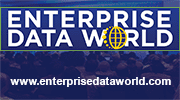 What is a Semantic Bank? One thing is for sure: The Financial Industry Business Ontology (FIBO) developed by the EDM Council, which semantically defines core financial industry concepts and relationships, probably plays a big role in it.
What is a Semantic Bank? One thing is for sure: The Financial Industry Business Ontology (FIBO) developed by the EDM Council, which semantically defines core financial industry concepts and relationships, probably plays a big role in it.
A look at Deutsche Bank should help clarify the concept. The bank has leveraged FIBO as the basic language, rules, and classifications to standardize content and meaning within its organization. Using FIBO sets the bank up to meet goals, including to reduce and eventually remove the need to reconcile transactions in favor of hard, transparent, immutable ledgers (think blockchain); eliminate the need for mapping, translating, and copying data in order to use it; and, enable the quick deployment of products and services by doing away with large-scale infrastructure and application rollouts.
“We have the same fragmented data architecture that a lot of banks have,” Shannon Walker, the enterprise data architect who is responsible for ontologies at the bank, said at the DATAVERSITY® Enterprise Data World 2016 Conference event in the spring. “We wanted a better, more integrated infrastructure, and we have to integrate data on a common language for access in a common manner.”
Stepping into FIBO
The first step was to use FIBO to realize its goals with Market Data, which it spends tens of millions of Euros on annually. Working first with a sample of this data to start with offered a right-sized opportunity and had a measureable result. The bank needed to abstract the market data that it buys from outside vendors into a common language, convert it to triple-store format (RDF), and enable business users to search across all of it, regardless of its origin, using FIBO terms in a portal it designed. Today, about a couple of hundred users are taking advantage of the Market Data portal.
Previously, users were capable of using the portal to search through market data that had been catalogued, but they had to choose the specific source they wanted to search – meaning they had to know where they’d be able to find what they were looking for before they could actually do anything, she explained. As a technology-agnostic ontology for the financial industry, “we wanted to use it as a common language” to accomplish functions such as searching through the portal without pre-determined source knowledge.
“Because FIBO is an ontology it gave us a jump from ETL [Extract-Transform-Load], 1990s style, to something new – Linked Data, semantic triple stores, and RDF,” noted Walker, with all the promise these offer of meaning and interaction.
As the bank saw it, the ontology’s benefits would revolve around creating an artifact that would be:
- The practical representation of a common language for data elements, providing a way to decouple vendor terminology from what the bank is consuming and what systems it’s populating
- A data model (including entities, attributes, and relationships)
- Business rules
- A taxonomy (classifications and hierarchies)
- Code lists and enumerations (currency and country codes, for example)
That artifact would be used to build a set of linked data that would become the first phase of the semantic layer, she noted.
To get to this point, the bank had to refine and choose the FIBO description scope that would fit its needs and resolve gaps for terms and characteristics it couldn’t find there; create URIs to resolve to each piece of data in line with the concept that everything is a resource and so needs an identifier; and, create triple stores from the data, pointed to by the market search portal.
“The ontology was something the data architects had to learn about,” she says. “We were moving from a traditional relational structure to something more flexible that can expand and scale more rapidly.”
More Value with FIBO
Walker noted of the bank that, “we are data hoarders.” While data is a backbone of this and every industry, extraneous and unused data can be backbreaking in various respects. With a business-friendly and vendor-agnostic ontology driven architecture; however, it became easier to track market data lineage and usage.
By tracking what data sources were most commonly accessed and downloaded by users, as well as which were established matches to each other, the bank could operate more efficiently. For example, redundant market data feeds were able to be removed since each feed now could be mapped against FIBO data concepts to find duplicates, therefore minimizing vendor feeds and storage system requirements. “The mapping will determine duplicate classes, which will be retired,” she said. Understanding what couldn’t be mapped and what wasn’t being accessed also provided a way to show the business that it’s paying for things it isn’t using, with the idea of turning those off, too.
The bank now has automated the mapping of incoming market data onto FIBO so that content is tagged as it is received, without human intervention. The bank also was able to map the data concepts to the applications it uses, which Walker says enabled it to visualize the flow of data and see where there was excessive complexity that could be reduced.
FIBO Fans Out
Other banks are taking advantage of FIBO to help their data communicate in a common language. State Street, for instance, recently completed a proof of concept for FIBO, and Wells Fargo has conducted such tests, too. Nordea Bank also has applied FIBO, semantics and business architecture methods as part of its strategy for financial, product, and risk control. All these institutions and a couple of dozen or so others are contributing to the standard’s development, too.
“It really takes a village to make this [FIBO] successful going forward,” according to Sherrie Littlejohn, Executive VP, Internal Innovation Strategies, Innovation Group at Wells Fargo, who also spoke at the event.
“Truly this is a next-generation data standard that we are putting in place,” she explained. Regulatory and business reporting will be beneficiaries in that the adoption of FIBO will propel organizations’ ability to gather and present consistent, accurate, and timely data thanks to having a common language standard for defining the terms, facts, and relationships associated with financial contracts.
Dennis Wisnosky, Senior Consultant for the EDM Council, where he provides technical strategy and operational guidance with regard to finalizing and implementing the FIBO standards, added that as far as regulations go, Basel Committee on Banking Supervision (BCBS) 239 compliance for effective risk data aggregation and risk reporting is a major driver for FIBO.
“We learned from bitter experience that financial organizations couldn’t identify the risks of their own portfolios and global regulators couldn’t tell the risks of the overall financial system,” he said at the event.
Nordea Bank, the largest financial services group in the Nordics, came to learning more about FIBO following meetings with American banks. These occurred as part of its objective to put principles in place to support business data owners in their Data Governance duties and to create and support maintenance and management of a knowledge base that facilitates Data Governance activities, ensuring that Metadata complies with the principles set out in BCBS 239 for effective risk data aggregation and risk reporting.
“The BCBS 239 standard asks for integrated taxonomies and architectures across the banking group,” said Elisa Kendall, partner at Thematix Partners LLC, which worked with the bank on its Data Governance efforts, at the event. “That was a huge challenge,” given the size of the bank and its many divisions – even though it’s small compared to American banks. The need was “to do end-to-end Data Governance using a vocabulary” to provide the basis for ground truth, she explained.
In a pilot program that focused on trade, FIBO provided a number of the basics around defining the concept of a trade across stakeholder organizations, applications and data sources, but not all. The bank contributed extensions back to FIBO to cover some of the gaps, and “it is committed to contributing back to FIBO whatever it can,” she said.
FIBO for Financial Industry’s Future
As Wisnosky puts it, “there’s no alternative to FIBO to achieving a common language in the industry,” and one that will help support the ability to draw conclusions that are not immediately apparent by known data.
All in all, the business value that FIBO offers both to banks and regulators, he says, includes having a standardized data scaffolding so that the industry is aligned on common meanings of financial concepts, enabling BCBS 239 fulfillment, serving as an expressive and provable model for regulatory compliance, supporting financial and systemic risk intelligence, and serving as a financial Rosetta Stone for data validation, linkage, and harmonization. Also, it breeds faster time to knowledge via analytic insights and operational capabilities. Says Wisnosky, “FIBO can help us make sense of information in a decentralized world.”
Register for the Enterprise Data World 2017 Conference Today (in Atlanta, Georgia)

